
Fantagraphics is an American publisher of alternative comics, classic comic strip anthologies, manga, magazines, graphic novels, and the erotic Eros Comix imprint.

The Comics Journal, often abbreviated TCJ, is an American magazine of news and criticism pertaining to comic books, comic strips and graphic novels. Known for its lengthy interviews with comic creators, pointed editorials and scathing reviews of the products of the mainstream comics industry, the magazine promotes the view that comics are a fine art, meriting broader cultural respect, and thus should be evaluated with higher critical standards.
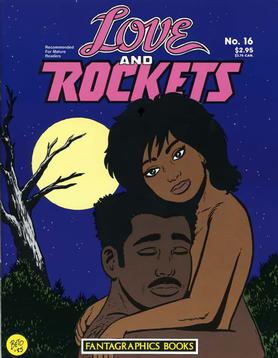
Love and Rockets is a comic book series by the Hernandez brothers: Gilbert, Jaime, and Mario. It was one of the first comic books in the alternative comics movement of the 1980s.
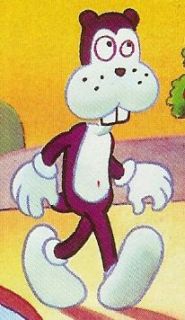
Frank is a cartoon character created by American cartoonist Jim Woodring. Frank is a bipedal, bucktoothed animal of uncertain species whom Woodring described as a "generic anthropomorph". The stories and supporting characters appear in a world called the Unifactor.
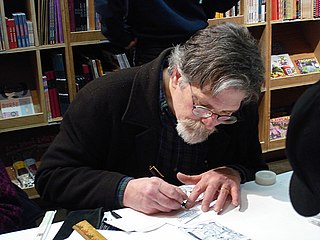
James William Woodring is an American cartoonist, fine artist, writer and toy designer. He is best known for the dream-based comics he published in his magazine Jim, and as the creator of the anthropomorphic cartoon character Frank, who has appeared in a number of short comics and graphic novels.

Daniel Gillespie Clowes is an American cartoonist, graphic novelist, illustrator, and screenwriter. Most of Clowes's work first appeared in Eightball, a solo anthology comic book series. An Eightball issue typically contained several short pieces and a chapter of a longer narrative that was later collected and published as a graphic novel, such as Like a Velvet Glove Cast in Iron (1993), Ghost World (1997), David Boring (2000) and Patience (2016). Clowes's illustrations have appeared in The New Yorker, Newsweek, Vogue, The Village Voice, and elsewhere. With filmmaker Terry Zwigoff, Clowes adapted Ghost World into a 2001 film and another Eightball story into the 2006 film, Art School Confidential. Clowes's comics, graphic novels, and films have received numerous awards, including a Pen Award for Outstanding Work in Graphic Literature, over a dozen Harvey and Eisner Awards, and an Academy Award nomination.

Harvey Kurtzman was an American cartoonist and editor. His best-known work includes writing and editing the parodic comic book Mad from 1952 until 1956, and writing the Little Annie Fanny strips in Playboy from 1962 until 1988. His work is noted for its satire and parody of popular culture, social critique, and attention to detail. Kurtzman's working method has been likened to that of an auteur, and he expected those who illustrated his stories to follow his layouts strictly.
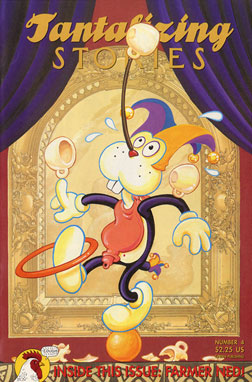
Tantalizing Stories was a comic book series by Mark Martin and Jim Woodring published by Tundra Publishing. The contents of each black and white issue were divided between the two cartoonists and featured a variety of comic short stories, illustrations and text pieces. The series was the original venue for most of Woodring's early stories featuring his character Frank, which were later collected into several books. It also printed stories of Martin's recurring character Montgomery Wart. Although the series was ostensibly aimed at children, it developed a readership among fans of alternative comics.
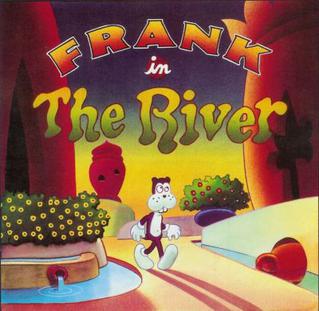
Frank in the River is a 24-page comic story by Jim Woodring.
Michael Catron is an American comic book editor and publisher. He is former publisher of Apple Comics and co-founder of Fantagraphics.
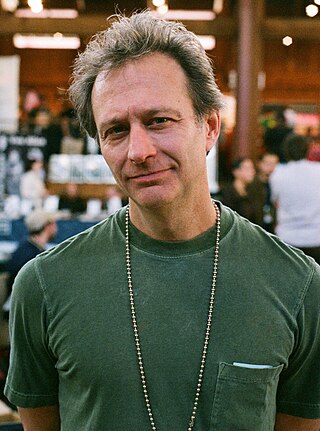
Gary Groth is an American comic book editor, publisher and critic. He is editor-in-chief of The Comics Journal, a co-founder of Fantagraphics Books, and founder of the Harvey Awards.

Dennis P. Eichhorn was an American writer, best known for his adult-oriented autobiographical comic book series Real Stuff. His stories, often involving, sex, drugs, and alcohol, have been compared to those of Jack Kerouac, Ken Kesey, and Charles Bukowski.

Kim Thompson was an American comic book editor, translator, and publisher, best known as vice president and co-publisher of Seattle-based Fantagraphics Books. Along with co-publisher Gary Groth, Thompson used his position to further the cause of alternative comics in the American market. In addition, Thompson made it his business to bring the work of European cartoonists to American readers.

Congress of the Animals is a graphic novel by American artist Jim Woodring published on June 8, 2011. The book is Woodring's second book-length comic set in his fictional world, the Unifactor, and the first to star his most famous character, Frank.
Canadian cartoonist Chester Brown attracted the attention of critics and peers in the early 1990s alternative comics world when he began publishing autobiographical comics in his comic book Yummy Fur. During this period Brown produced a number of short strips and two graphic novels: The Playboy (1992) and I Never Liked You (1994). The personal and revealing deal with Brown's social awkwardness and introversion, and the artwork and page layouts are minimal and organic. In 2011 Brown returned to autobiography with Paying for It, an account of his experience with prostitutes.
Eric Reynolds is a Seattle-based cartoonist, critic and comics editor who is the Vice-President and Associate Publisher for Fantagraphics Books. His work has appeared in The Stranger, The Comics Journal, The New York Times, The New York Press and other publications. He has edited or co-edited The Complete Crumb Comics, Angry Youth Comics, Dirty Stories and MOME, and has inked some of Peter Bagge's comics.
Milton Knight Jr. is an American cartoonist, animator, comic book artist, writer, painter, and storyboard/layout artist. He directed animation for a variety of cartoon series, including Cool World, Adventures of Sonic the Hedgehog, and The Twisted Tales of Felix the Cat. He is known for his Golden Age (1930s) cartooning style.
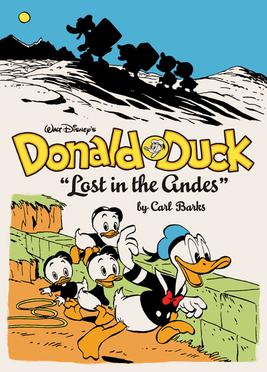
The Complete Carl Barks Disney Library is a series of books collecting all of the comic book Donald Duck and Uncle Scrooge stories written and drawn by Carl Barks, originally published between 1942 and Barks' retirement in June 1966. The series was launched in late 2011, and will comprise 6,000 plus pages over roughly 30 200- to 240-page volumes when it is finished.

Goodman Beaver is a fictional character who appears in comics created by American cartoonist Harvey Kurtzman. Goodman is a naive and optimistic Candide-like character, oblivious to the corruption and degeneration around him, and whose stories were vehicles for social satire and pop culture parody. Except for the character's first appearance, which Kurtzman did alone, the stories were written by Kurtzman and drawn by Will Elder.















